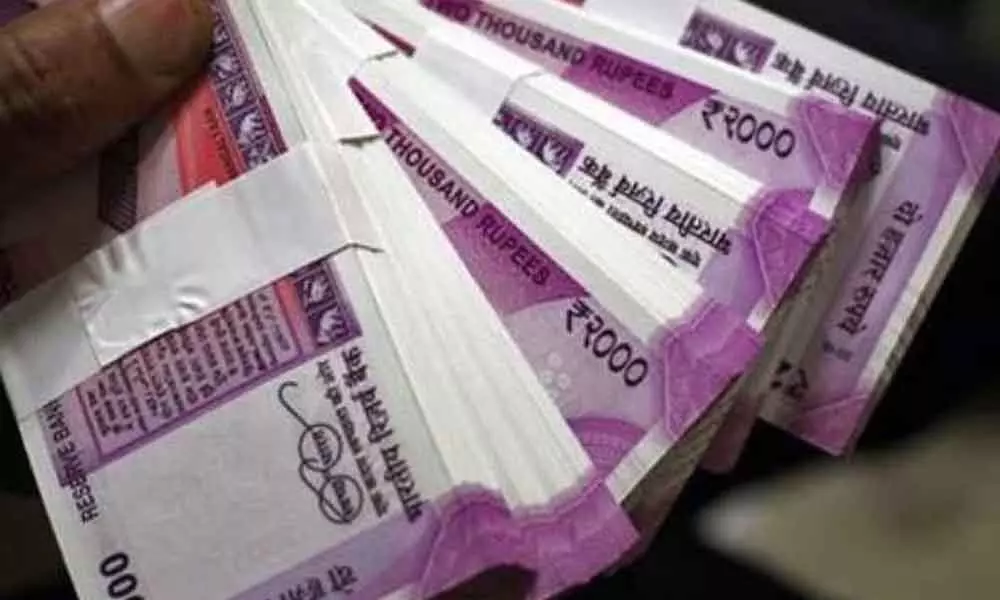Live
- They always want me to win, and now I feel lucky to have been offered a story like ‘Zebra’: Satyadev Kancharana
- ‘Democracy first, humanity first’: PM Modi in Guyana's parliament on two countries' similarities
- PKL Season 11: Telugu Titans register third straight win to top standings
- Is Pollution Contributing to Your COPD?
- NASA Unveils Underwater Robots for Exploring Jupiter's Moons
- Additional Central forces arrive in violence-hit Manipur
- AR Rahman and Saira Banu’s Divorce: Legal Insights into Common Issues in Bollywood Marriages
- 82.7 pc work completed in HPCL Rajasthan Refinery area: official
- Curfew relaxation extended in 5 Manipur districts on Friday
- Tab scam prompts Bengal govt to adopt caution over fund disbursement
Just In
Worst contraction in India's economy


Worst contraction in India’s economy
As expected, India's economy landed in negative territory during April-June period, the first quarter of the current fiscal. But the extent of the economic contraction was much beyond the estimates and projections made by experts and economists.
As expected, India's economy landed in negative territory during April-June period, the first quarter of the current fiscal. But the extent of the economic contraction was much beyond the estimates and projections made by experts and economists. As per data released by the National Statistical Office (NSO) on Monday, the country's gross domestic product (GDP) contracted by a staggering 23.9 per cent in the first quarter as Covid-19 pandemic hit the economy really hard. The GDP at constant prices (2011-12) has been estimated at Rs 26.90 lakh crore in Q1FY21 as against Rs 35.35 lakh crore in the same period a year ago.
That means the GDP lost a whopping Rs 8.45 lakh crore or nearly one-fourth during April-June 2020. Reflecting the ground realities, labour-intensive sectors such as construction, manufacturing and mining sectors witnessed the biggest fall. Construction sector, the second biggest employer after agriculture in India, registered 50 per cent de-growth while manufacturing segment saw 39.3 per cent drop. Agriculture sector was the only saving grace as it clocked 3.4 per cent upswing against 3 per cent growth in the same three months a year ago.
The steep fall in key sectors like construction and manufacturing indicates that the total nationwide lockdown imposed by the Central government from March 25 this year to contain the spread of deadly Covid-19 pandemic, took a heavy toll on labour intensive sectors. Private final consumption expenditure (PFCE) growth also collapsed in the quarter as people restricted their spending to essential items. However, this is not the first time that India's economy has contracted. It slipped into negative territory five times since 1950-51 when GDP data was made available for the first time. The GDP recorded negative in 1958, 1966, 1967, 1973 and 1980. But the economic fall in those years was primarily because of rainfall deficit.
This time, it's because of an invisible virus that is ravaging the world. But GDP shrinkage in the first quarter is the worst so far in the country's history and second highest among the major economies during this pandemic, after the United States which recorded a fall of 32.9 per cent in April-June. The United Kingdom is at the third place with 22 per cent fall in its GDP during the same period. With Covid-19 now spreading its tentacles to rural India and the country registering over 75,000 cases daily, the economy will continue to reel under the pandemic's pressure.
As a consequence, GDP is likely to register negative growth in the remaining three quarters as well. The State Bank of India's research report, Ecowrap, on Tuesday estimated that the economy would decline by 10.9 per cent in this current fiscal. Its earlier projection was at (-) 6.8 per cent. SBI Ecowrap revised its projections based on the latest official data on Q1 GDP. As fall in Q1 GDP is much more than estimated and coronavirus is still active, the Central government should come out with an additional round of stimulus package to spur economic activity. And it should do it fast. Otherwise, GDP will contract at a much higher pace than estimates made thus far.

© 2024 Hyderabad Media House Limited/The Hans India. All rights reserved. Powered by hocalwire.com






